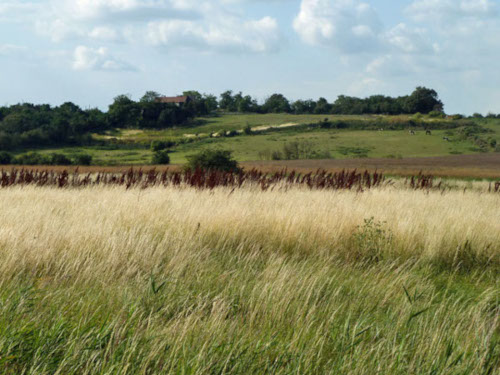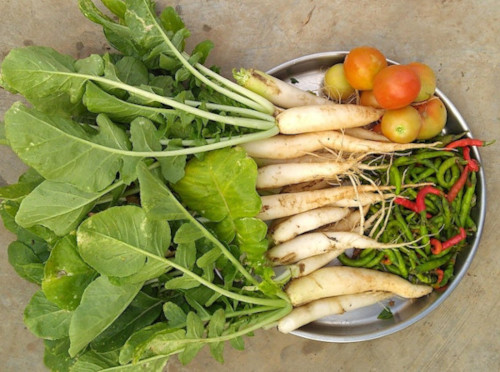Land & food commons
Who we are and how to contact us
Stroud Land Commons is a group of local people who want to bring land and community buildings in and around Stroud into community ownership in perpetuity, to reduce costs for food producers and make locally-produced, high-quality food affordable for everyone.
If you’d like to get involved, either as a prospective tenant, customer, investor, steward or volunteer, please read the information on this page, and get in touch.

Terri Hathaway
LAND COMMONS
Why land commons?
Most land is owned by a tiny percentage of people. Britain is second (behind Brazil) when it comes to concentration of land ownership – over 70% of the land (and all the farmland) is owned by less than 1% of the population, who get taxpayers’ money to maintain it. Scotland is worst of all, with 432 families owning half of all non-public land – but it’s the same problem in Europe and the rest of the world. Millions of small farmers are losing their land in Asia, Africa and Latin America (Oxfam say that 227 million hectares of farmland in developing countries were appropriated by international investors in the first decade of this century).
Land prices are rising rapidly and landowners charge ever-higher rents to tenant farmers. Growers and food producers need to be generating a lot more income than currently – and that’s difficult because land and house prices are so inflated, but food prices are deflated. Cheap supermarket food means that growers are squeezed – to the point that they have to leave the land or struggle to sustain a business / organisation / livelihood. Then locally-grown, organic food is only accessible for the well-off, who get healthy, better-quality food, but the less well-off don’t.
How do we make good food more affordable? There are several strands. First, there’s a need to reduce house prices. This can happen via the housing commons, and we could also possibly provide tiny houses / caravans on growing land. Then lower income is still viable for growers, as they’ll just need to buy food and energy, with much lower housing costs.

The basic concept
A land commons is an association of 4 member groups: tenants, investors, stewards, and a ‘custodian’ group (like trusted ‘village elders’) with a veto vote to ensure that commons principles are adhered to, and that land is never sold out of the commons. The commons group issues rent vouchers that can be redeemed for tenancy of commons land. Vouchers are purchased by investors and/or tenants, and the cash raised is used to purchase more land. This avoids debt to the banking system.
Roadmap and news
Last year we brought together around 20 organisations owning or looking to own land and community buildings, and to produce food in and around Stroud, to form what we called a ‘cauldron’ containing all these local groups, to see how we might work together and benefit each other. We met with group representatives to look at their capacities, networks, needs and challenges, and think about how the cauldron could move forward to support each other, using the commons model.
But the larger task is to increase demand for local food. We’re working on several ways in which we could increase demand, joining the dots to increase efficiencies and developing strategies for a campaign that can benefit the cauldron members.
SLC member Nick Weir has been working on efficient local food systems for decades, with the Open Food Network (OFN) – which is like an online shop for small food producers. OFN’s Food Hub aggregates the produce from multiple growers and reduces their admin side so that they can focus on growing food. We’re working on several strands that can bring in bigger orders for locally-grown food over a longer term.
Another way is to link together different sectors of the commons economy in mutually-supportive ways. For example, affordability will be achieved for housing commons tenants via rent rebates, depending on how long they’ve been a commons member. These (and other) rebates and benefits could be paid in local food (or care, energy or water) vouchers, helping to make commons food and utilities more affordable and accessible, and to allow people to avoid corporate supermarkets and consume food that’s more nutritious and sustainable, and that supports the commons economy.
But we need a cultural shift – to see locally-grown produce as providing food resilience in communities during hard times, which is worth a lot. Food hub networks could bring in enormous demand, serving better-off and less well-off communities – then land commons becomes a much more viable investment vehicle.
We got to know local community hubs, who have some powerful ideas, including food events where people buy pre-paid vouchers. Locally-produced food becomes something that local people have agency over, which can help build a new food culture from the ground up.
More on food procurement hubs.

Other sources of information
- Corvées: commons practices in ancient and modern France: Will Ruddick of Grassroots Economics talks about Corvées – an ancient traditional practice in what is now called France, where neighbors assist each other reciprocally with farming tasks in a spirit of mutual aid. Corvées were not just about getting work done; they were about reinforcing community ties and ensuring collective well-being.
- How a new land commons movement can support agroecology: Michelle Grant of Stroud Commons explains how there’s huge overlap between the principles of agroecology and of commoning, and growth in the commons movement could mean a shift towards agroecology and away from damaging industrial agriculture, as there would be more access to land for small, organic farmers.







